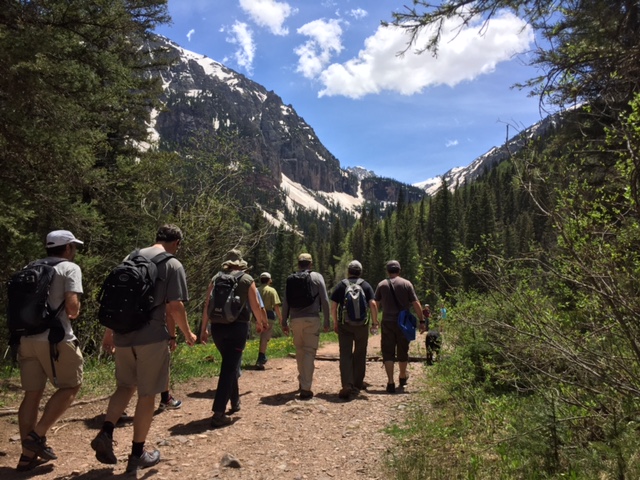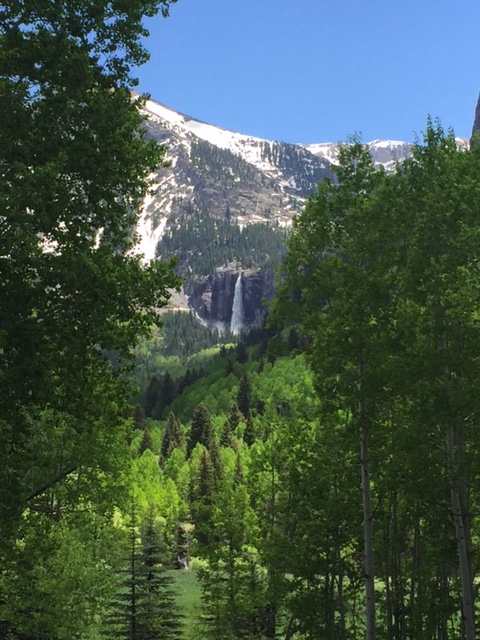Overview of 2016 Season
Telluride Science Research Center (TSRC) had a very successful 2016 season, hosting 48 meetings, in addition to the Telluride School on Fundamental Science for Alternative Energy, led by Victor Batista and Gary Brudvig from Yale University. For TSRC, 2016 was about building on the success of 2015 and laying a foundation for the future. In addition to releasing its first-ever annual report, redesigning and rebranding the website, rebuilding the scientist registration system, and bolstering the organization’s governance structure with the creation of the TSRC General Members, TSRC initiated its first strategic planning effort. The goal of this effort was to generate a clear plan, with constituent support, to guide TSRC on its path forward while preserving the special qualities that make the organization so successful in advancing research and education in molecular science.
TSRC Scientists Win Nobel Prize for Chemistry
Two of the three 2016 Nobel Prize for Chemistry are TSRC scientists. Sir J. Fraser Stoddart of Northwestern University and Bernard (Ben) L. Feringa of the University of Groningen were awarded this year’s prize for their work on designing and synthesizing "molecular machines." In 2014, Feringa, Stoddart, and Joseph Michl from the University of Colorado started the TSRC workshop, Molecular Rotors, Motors, and Switches. In awarding them the prize, the Nobel Committee referenced a 2000 article in Angewandte Chemie International Edition of which Dr. Stoddart was a contributing author. This article defined a molecular machine “as an assembly of a distinct number of molecular components that are designed to perform machine-like movements (output) as a result of an appropriate external stimulation (input).”
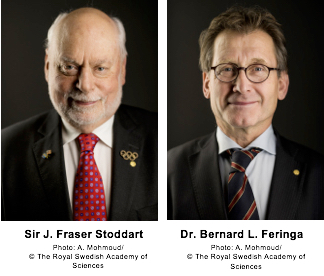
Stoddart made his first major impact in this field when he created rotaxane, a molecular machine in which an electron-poor molecular ring can move along an electron-rich molecular axle (the ring is mechanically attached to the axle). By 1994, Stoddart and his research group found that by adding heat they could control the movement of the ring along the axle, thereby transforming heat into work—a characteristic of the heat engine observed at the molecular scale.
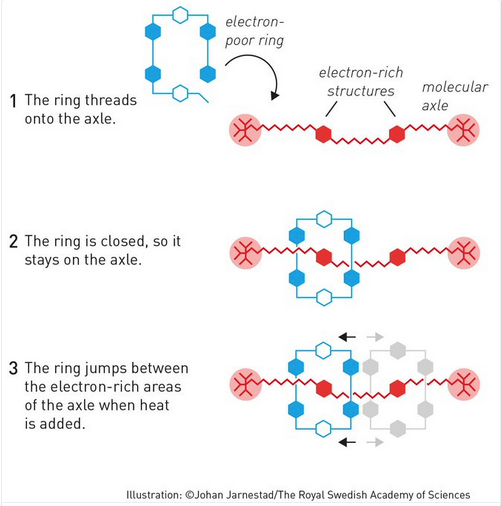
Feringa also led the development of the first machines at the University of Groningen when in 1999 he built the first molecular motor. He and his team constructed a molecular rotor blade that continually spun in a predetermined direction. Although the first motor was very slow, by 2014 the motor could rotate up to 12 million revolutions per second.
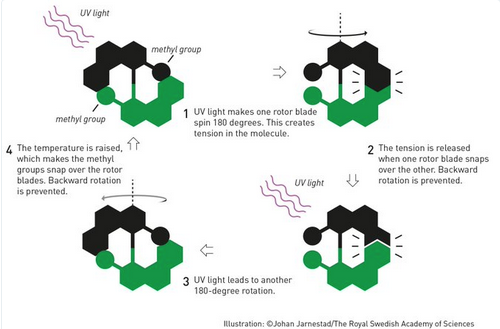
Since those initial accomplishments, both Stoddart and Feringa have created various molecular machines that perform specific functions, ranging from Stoddart’s 20kB memory computer chip to Ferninga’s molecular motor that can rotate a glass cylinder.
In commenting on the impact TSRC has had on advancing molecular science, Stoddart recently called TSRC "a breath of fresh air when it comes to its engagement with scientists up there in the mountains of Colorado. The support your organization offered to Ben and myself, together with Josef Michl, in establishing a workshop of Rotors, Motors, and Machines in 2014 predated the announcement of the Nobel Prize in Chemistry for the design and synthesis of molecular machines by just over a couple of years,” said Stoddart.
“You were able to afford early recognition to this relatively new line of research and provide the ideal meeting place for the pioneers from all around the world to come together for a week, first in 2014 and then again in 2016, and inform one another, swap ideas, and establish collaborations. Ben and I were in agreement on one thing following the meeting last summer. It was one of the best meetings we had attended in a long time. Let’s keep it going forward from strength to strength under new leadership in 2018,” added Stoddart.
A more detailed report on the scientific background regarding molecular machines and the Nobel Prize for Chemistry 2016 can be found on the Royal Swedish Academy of Sciences’ website.
New Flight Partnership with Colorado Flight Alliance and Ski.com
TSRC has recently partnered with the Colorado Flights Alliance and Ski.com to help its scientists obtain discounted flights into Montrose and the other regional airports. Please see "Getting Here" on TSRC’s travel page to learn more about booking discounted flights through Ski.com.
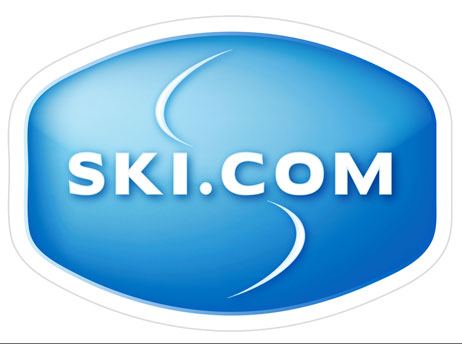
Quantifying Impact
For any organization, quantifying impact is important. For TSRC, not only does it help our scientists, particularly international ones, justify the time and expense of traveling to TSRC, it also helps us raise capital to support our mission and scientists.
If you will be publishing research that was stimulated by an idea initiated or developed at TSRC, or advanced through a collaboration initiated or developed at TSRC, please consider citing the Telluride Science Research Center (TSRC). While TSRC is not able to provide much direct financial support to its scientists, TSRC provides indirect financial and mission support to all of its scientists.
Please consider using a variation of the following: “This work was (e.g. developed, initiated, strengthened, supported, completed, or advanced through a collaboration) at the Telluride Science Research Center (TSRC).”
As part of this effort to better quantify impact, we are going to start to highlight workshops on an ongoing basis. If you are an organizer or participant with a good story describing how TSRC is impacting the advancement of molecular science, please share it with us. Please read about the following workshops making an impact in the design of new materials and the prediction and treatment of disease through fundamental RNA research.
Designing New Materials
Aided by the National Science Foundation’s (NSF) participation in the Materials Genome Initiative (MGI) and a $1.6 million NSF grant award in 2012 for Designing Materials to Revolutionize and Engineer our Future (DMREF), Janice Musfeldt of the University of Tennessee and Sang-Wook Cheong and David Vanderbilt of Rutgers University in 2013 started the workshop, Enhanced Functionalities in 5d Transition-Metal Compounds from Large Spin-Orbit Coupling. The intent of the workshop was to advance a new strategy for designing materials. Not only did this strategy involve an approach that incorporated heavy elements to identify new material properties, specifically unusual electronic and magnetic properties that could potentially improve technology such as data storage, but it also involved experimentalists and synthetic materials scientists to test the theoretical concepts being developed by the group.
The success of this team’s workshop and collaborative research has made quite an extraordinary impact: 24 papers, 11 appearing in Physical Review Letters and two in Nature Communications, as well as the renewal of a $1.6 million NSF grant. The impact of their efforts has been even broader: With grant support, the team has created summer school and winter school programs that incorporate education and mentorship of the young scientists that represent the future of the field.
"Our DMREF team highly values the TSRC venue. In addition to advancing our own science, the extended discussions (and hiking!) have jumpstarted many new collaborations and truly advanced the field." – Janice Musfeldt, University of Tennessee
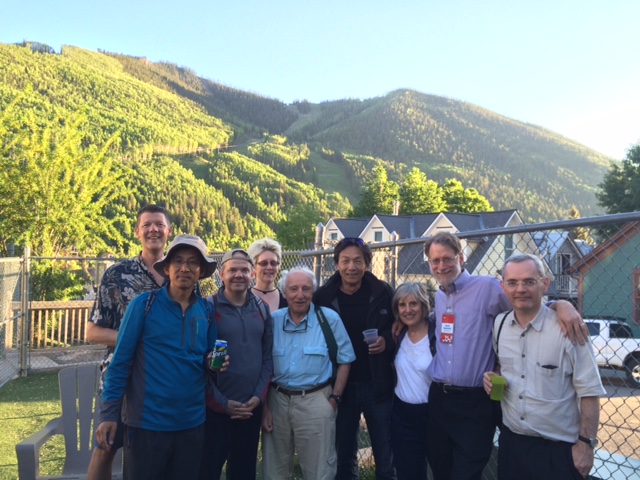
Unraveling the Mysteries of RNA
A central molecule in biological regulation, including genome maintenance and editing, RNA molecules are also associated with many human diseases, including the common cold, measles, and Zika virus, and degenerative disorders of cardiovascular and muscular functions. It is critical to understand RNA structure as the complex three-dimensional shape or "fold," for RNA molecules underlie the biological function/activity. Such structures are laborious to determine experimentally and challenging to predict computationally. Advances on both fronts are helping scientists make discoveries in terms of basic scientific knowledge about RNA activity and the practical design of RNA-based therapeutic treatments for human diseases.
In 2014, Tamar Shlick of New York University and Anna Pyle of Yale University started the biennial workshop, Challenges in RNA Structural Modeling and Design. This workshop closely follows TSRC’s philosophy and workshop format by bringing together broad-minded scientists from diverse fields and research approaches to address a shared scientific challenge with new ideas and new science. This group is using a novel array of experimental, mathematical, statistical, and computational methods to investigate RNA. In addition to a recently published paper in the Biophysical Journal, four members of this workshop—Sarah Woodson from John Hopkins University, Anna Marie Pyle from Yale University, Tamar Schlick from New York University, and David Lilley from the University of Dundee, United Kingdom—were all invited to speak at a special mini-symposium on RNA at the Biophysical Society in New Orleans in February 2017.
"TSRC workshops allow us to discuss—in an intimate, relaxed, and supportive environment—recent scientific findings, hypotheses, challenges, and approaches. My interactions at TSRC workshops have led to new collaborations, ideas, federal grant proposals and funding, and other follow-up workshops, including those supported by other prestigious organizations. Needless to say, the beautiful area and the people of Telluride are a big part of the success and superb atmosphere surrounding the meetings. I have also enjoyed interacting with Telluride residents, be it on the gondola ride, a hike, or a yoga class; impressively, they seem very interested in science.” – Tamar Schlick, New York University
Call for New TSRC Workshops
Annually, TSRC hosts approximately 50 workshops. To ensure that the workshops remain at the forefront and reflect new trends in molecular science and to diversify programming, we are inviting new proposals to be considered beginning in the 2018 season.
We are especially interested in proposals for new workshops in the areas of energy science, nanoscience, materials and polymer science, and atmospheric and environmental science, but other new topics in molecular science that are not covered by current workshops will be considered as well.
TSRC provides great support, making it easy to organize a workshop. Members of the TSRC community value these workshops as a place for discussing cutting-edge science at the highest levels in an intimate and informal setting.
Please share this opportunity with colleagues who might be interested in proposing a new workshop.
To be considered for 2018, we request proposals no later than August 31, 2017.
Details of TSRC’s proposal process can be found on TSRC’s website.

Expansion of TSRC Summer Schools for 2017
In 2017, TSRC will see a welcomed expansion in its graduate-level summer school programming. The organization will host four week-long schools this summer and will provide a unique and special educational experience to approximately 130 of the country’s top graduate students. TSRC’s summer schools are proposed, developed, and taught by TSRC’s exceptional community of scientists. The graduate-level summer school idea began when TSRC scientists recognized that there were certain concepts and skills that were not being universally well covered by university programs. As a result, graduate students were not receiving the training necessary to be fully prepared to make a maximum impact in their fields. The TSRC scientist community supports the schools to ensure that the US is producing the best up-and-coming thought leaders in molecular science.
This year’s offering of the Telluride School on Theoretical Chemistry, TSRC’s biennial summer school program founded by Jack Simons, University of Utah, will be led by Joan-Emma Shea, University of California, Santa Barbara, and Thomas Miller, Caltech. In addition, TSRC will host three new summer schools: the Telluride School on Stochastic Approaches to Electronic Structure Calculation will be led by Ken Jordan, University of Pittsburgh, Miguel Morales, Lawrence Livermore National Laboratory, Luke Shulenburger, Sandia National Laboratory, and Lucas Wagner from the University of Illinois. The Telluride School on Time-Dependent Density Functional Theory will be led by Christine Isborn, University of California, Merced, Neepa Maitra, Hunter College CUNY, and Andre Schleife, University of Illinois at Urbana Champaign. The Telluride School on Biomolecular Structure and Dynamics: Theory and Experiment will be led by Arthur G. Palmer III, Columbia University Medical Center, and John E. Straub, Boston University.
Please consider donating to TSRC’s new Graduate-Level Schools Fund or to the Telluride School on Theoretical Chemistry Endowment Fund.
TSRC's New Website
This past year, TSRC launched its new website to reflect the refreshed brand and outlook of the organization. We invite you to visit the new website if you have not already.
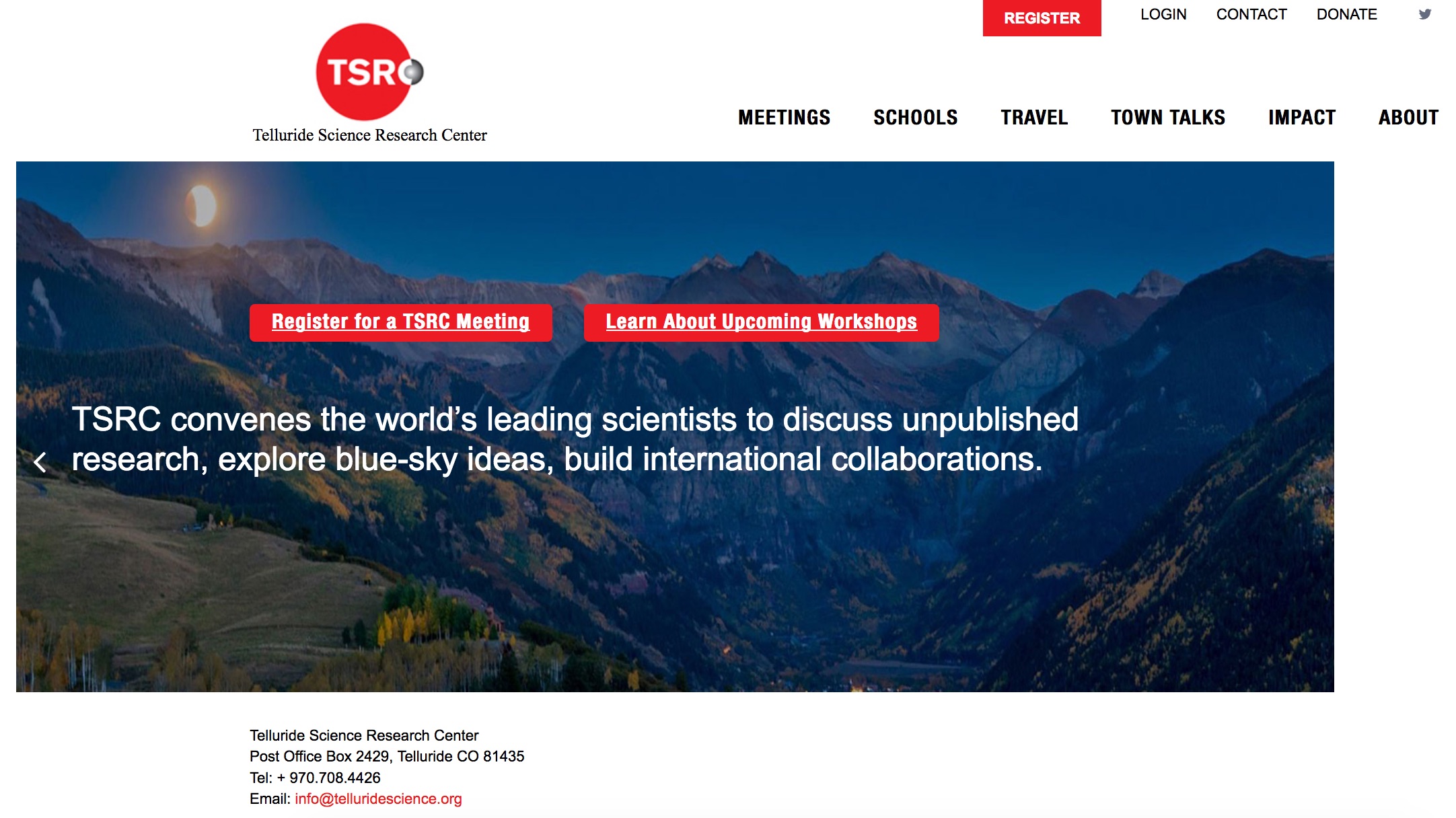
TSRC's First Annual Report
In June 2016, TSRC released its first-ever annual report for the 2015 year. This annual report, which can be viewed on TSRC’s website, was a benchmark report to provide a foundation for future reports. The organization will be releasing the 2016 Annual Report in early summer of 2017. If you would like a hard copy of an annual report, please email Mark Kozak, TSRC’s Executive Director.
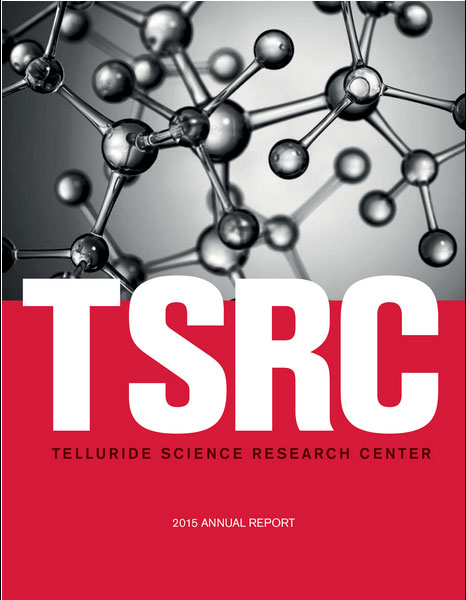
Town Talks 2016 & 2017
The Town Talk series is TSRC’s way of reaching out to the local communities of Telluride and Mountain Village. Through these talks we can share the importance of molecular science and its impact on our world as well as creating awareness and appreciation for TSRC’s mission and our love of Telluride. TSRC would like to thank all the 2016 TSRC Town Talk speakers.
TSRC hosted eight Town Talks during the summer of 2016. The season began with Michael New, Astrobiology Discipline Scientist and Lead Discovery Program Scientist from NASA’s Planetary Science Division. He spoke about where and how NASA is searching the universe for extraterrestrial life and in what form we are likely to find it.
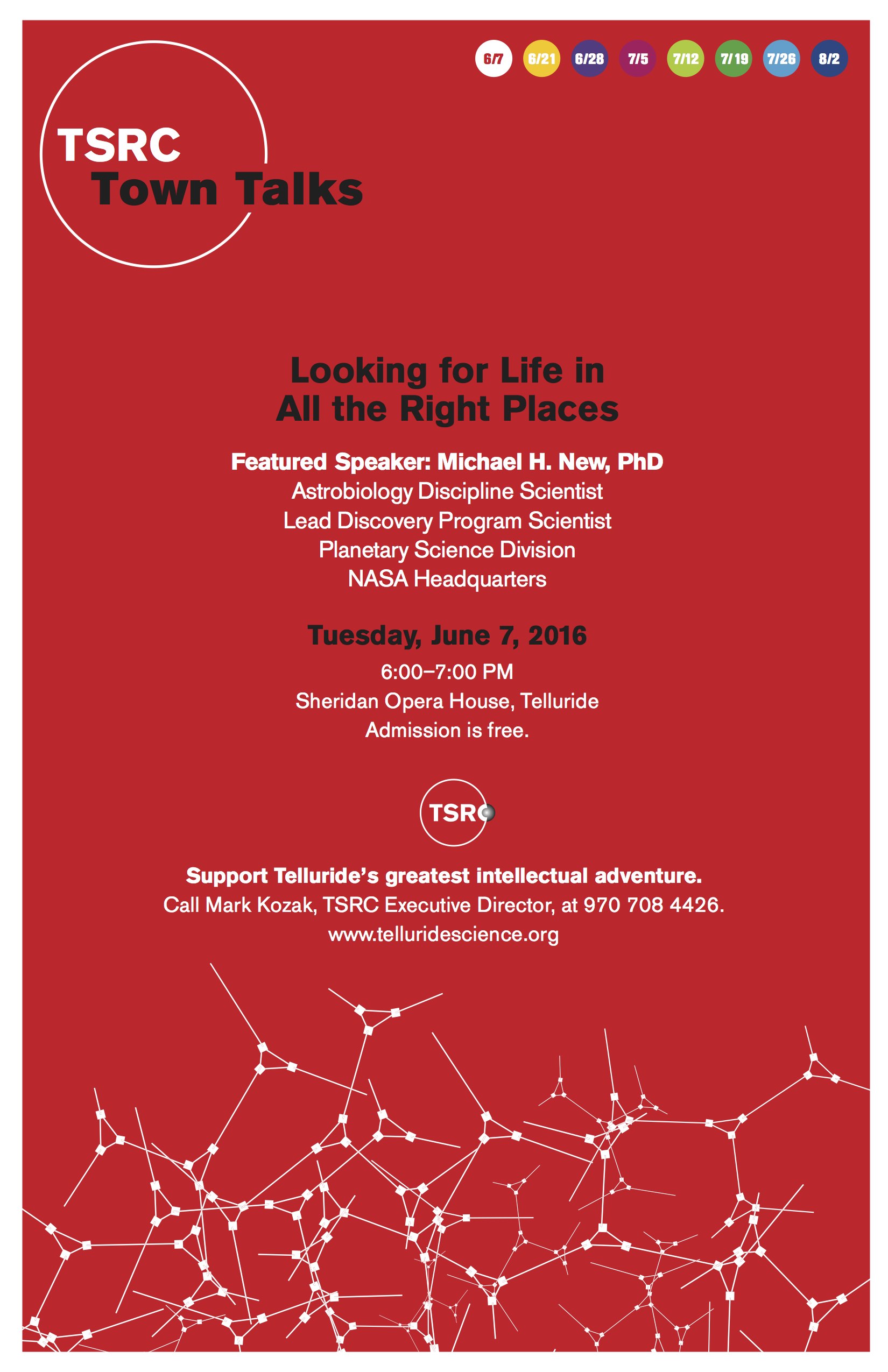
Franz Geiger, Professor of Chemistry at Northwestern University, discussed the government’s historic funding of science and its Return on Investment (ROI). He pointed out a surprise finding: economists like Charles Jones and John Williams of Stanford University and economists at the National Bureau of Economic Research and the Federal Reserve Bank of San Francisco found science investments generate ROI ranging from 30% to greater than 100%.
Graham Feingold, Research Scientist, NOAA Earth System Research Laboratory, Chemical Sciences Division, discussed the science of predicting cloud formations and the ramifications that these formations have on precipitation, particularly as the planet continues to warm.
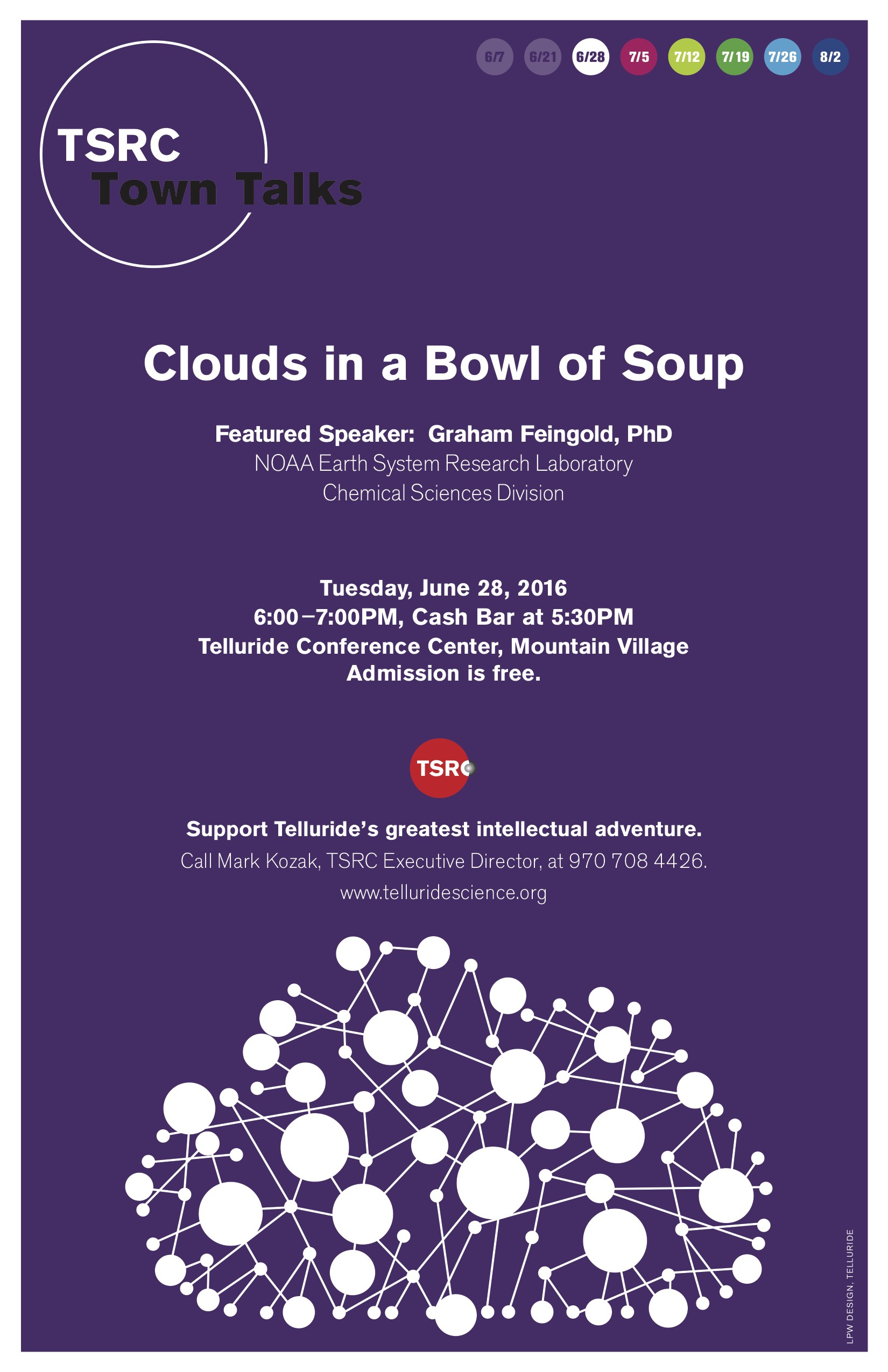
Paul O’Shea, Associate Dean of Research in Pharmaceutical Sciences at The University of British Columbia, discussed innovative technology for analyzing multiparametric molecular biomarkers to test for disease.
Greg Beran, Professor of Chemistry at the University of California, Riverside, gave an insightful talk on the effects of molecular crystal packing, in everything from chocolates to prescription drugs, as well as the race for new drug formulations and resulting patent fights.
Eric Bittner, John and Rebecca Moores Professor of Chemical Physics, University of Houston, presented “Zen and the Art (Science) of Celestial Navigation: Navigating the Oceans and the Molecular World.” He drew parallels between the original challenge of calculating longitude location on the oceans and predicting the location of a molecule at a specified time. Two technological breakthroughs solved each problem. The invention of the Harrison chronometer in the 18th century allowed sailors to calculate their longitude on the ocean, and in this century the development of the ultra-fast laser now allows scientists to predict the timing of a molecular events on a potential energy surface (like a topographic map).
Thomas Kleyman, MD, Sheldon Adler Professor of Medicine and Chief of the Renal-Electrolyte Division at the University of Pittsburgh, discussed “The Salty Sea Within Us,” and explained the complex regulatory functions performed by the kidneys to maintain the optimal level of fluid in the cells and circulatory system.
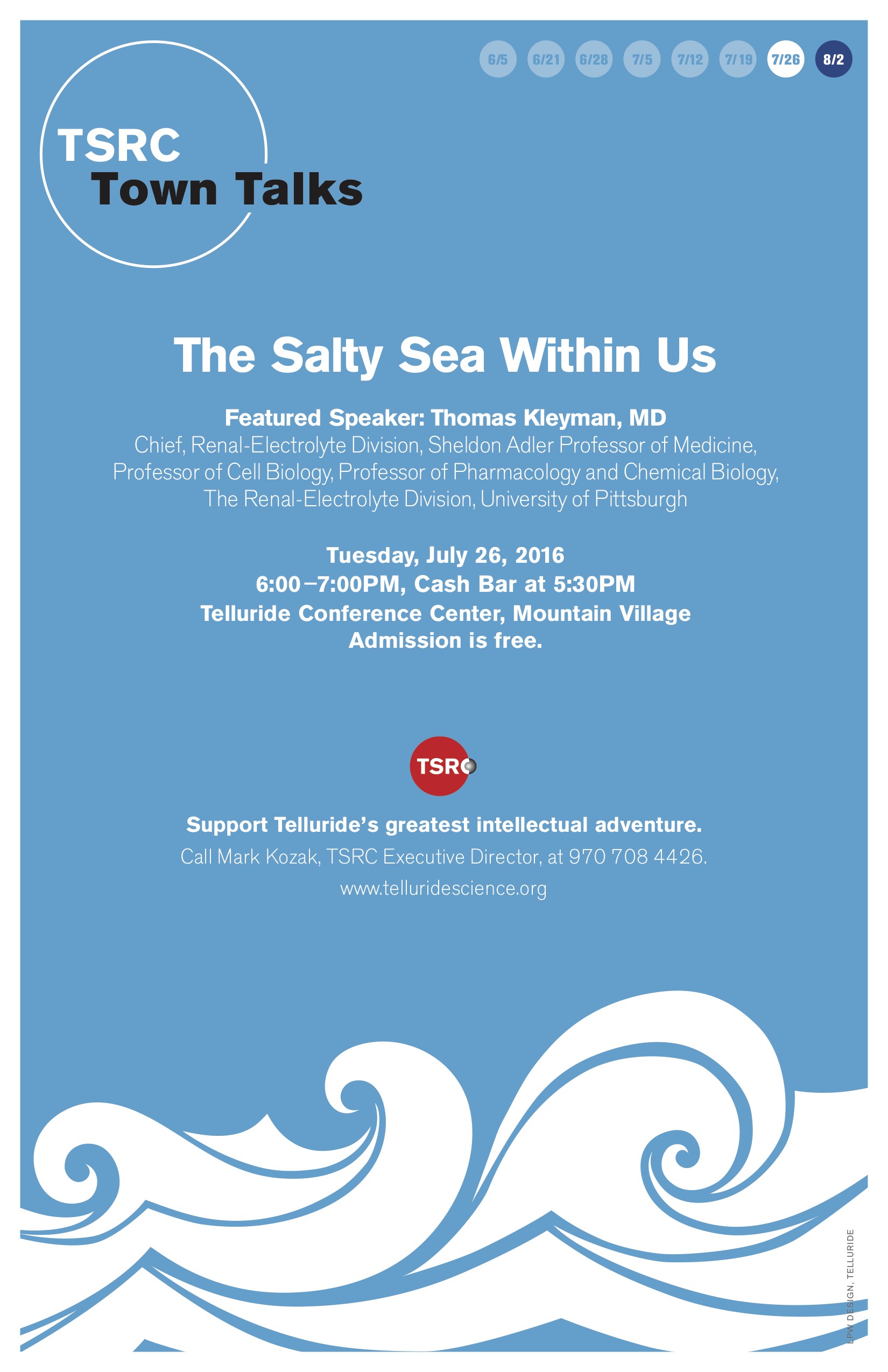
TSRC’s eighth and final Town Talk of the season was given by Cynthia Burrows, Distinguished Professor and Thatcher Presidential Endowed Chair in Biological Chemistry at the University of Utah. Her presentation, “Beyond Watson & Crick: DNA Quadraplexes and Their Roles in Aging, Cancer, and Zika Virus,” examined the role of the G-quadraplexes, a four-stranded segment of DNA found at the end of chromosomes and at the start of genes, a segment that appears to play an important role in how genes are expressed. Early research suggests that the G-quadraplex and our ability to interact with this unique segment of DNA might be key to controlling aging, limiting cancer’s ability to grow, and targeting and killing deadly viruses.
Please click here for a listing of TSRC’s 2016 Town Talks.
Please click here for the tentative 2017 TSRC Town Talks schedule. This schedule will be continually updated as speaker are added.
The 2017 TSRC Town Talks will continue to examine research in the 21st century for both a lay and scientific audience. In their upcoming Town Talk entitled “New Materials for Solar Energy Capture and Conversion,” Natalie Stingelin, Professor of Materials Science and Engineering at the Georgia Institute of Technology, and Chad Risko, Assistant Professor of Chemistry at the University of Kentucky, will discuss the development of new materials and devices to capture solar energy. They will address solar energy from the perspectives of different disciplines, and demonstrate how their research endeavors help form the foundation for novel materials design. Stingelin and Risko will also discuss how their respective upbringings – in the mountains of the Swiss Alps and the farmlands of Kansas – have impacted their scientific careers, and the importance that multiple cultures, in addition to multiple disciplines, can have in pushing new technologies forward.
TSRC's First Strategic Planning Effort
TSRC conducted its first-ever strategic planning effort in 2016. This effort was initiated by TSRC’s Board of Directors, led by the Strategic Planning Working Group (SPWG), and relied on feedback from the +70 TSRC General Member scientists. The SPWG included James Skinner (co-chair) from the University of Chicago, Audrey Marnoy (co-chair and TSRC Board Member), TSRC Board Member, Irene Burghardt from Frankfurt University, Ken Jordan from the University of Pittsburgh, Doug Tobias from the University of California, Irvine, Tamar Shlick from New York University, Joan-Emma Shea (TSRC Board Member) from the University of California, Santa Barbara, Ann McDermott from Columbia University, David Reichman (TSRC Board Member) from Columbia University, Miles Cook (TSRC Board Member) from Bain Consulting, and Mark Kozak (TSRC Executive Director).
The report produced by the SPWG was presented to the TSRC Board of Directors at its Annual Retreat in December 2016. There was overwhelming agreement among all stakeholders that quality should not be compromised for the sake of growth. Much of the focus of the strategic planning effort involved articulating what is special about TSRC’s brand or reputation to ensure that the unique qualities underlying TSRC's success are preserved and enhanced moving forward. The SPWG believes that TSRC is valued by its scientists because it has stayed true to its belief that a small, friendly, intimate, and naturally inspiring environment facilitates communication, collaboration, and a sense of community. It’s these qualities, combined with the inclusion of the best and most innovative scientists, and workshops focusing on exploring what is not currently understood, that has made TSRC so effective in advancing science and technology that benefits our society and the planet.
The SPWG group concluded that to maintain an environment that is aligned with the highly valued TSRC experience, the organization should curtail any further growth during the primary summer season and only encourage the growth of workshops during the fall and winter. The SWPG, Board of Directors, and administration would also like to limit the number of workshops to six per week, keeping the total number of scientists under 150 per week. The benefit would be enhanced intimacy and scientist experience; additionally, it would ensure that TSRC could secure affordable lodging for all its scientists in a climate of diminishing lodging inventory and increasing lodging costs.
Currently, because TSRC has access to Telluride Elementary School or Telluride Intermediate School for only seven to eight weeks in the summer, it must host up to eight workshops per week to meet the existing workshop load. If TSRC could expand the primary season from the beginning of June through the end of August, it could reduce the number of workshops to six per week. Because of the organization’s strong partnership with the Telluride School District and the scientists’ love for the Elementary School, TSRC would like to continue to utilize the schools; however, the organization would need to obtain additional meeting space. An assessment of the organization’s facility requirements is currently being evaluated by the Board of Directors.
The SPWG also considered and deliberated on the scope of programming, workshop size, workshop freshness, participant qualifications, workshop etiquette, summer schools, international meeting policy, costs, lodging solutions, and facility needs. Many of the recommendations have been incorporated into the organizer’s handbook. A full report is available upon request from Mark Kozak, TSRC’s Executive Director.
TSRC Creates General Members in 2016
In 2015, TSRC’s Board began the process of modifying TSRC’s governance structure so its scientist constituents could have a stronger representation in the organization’s governance. The TSRC General Members concept is borrowed from the Aspen Center for Physics governance model, which has served as a successful mechanism to engage their scientists in institutional decision-making.
In 2016, TSRC formally modified its bylaws to include the creation of the TSRC General Members. The General Members are composed of representatives from TSRC workshops as nominated by the workshop organizers. General Members serve a term of two years.
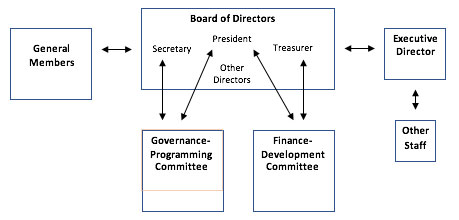
Following the introduction of the General Members to the governance structure, the Board held two General Member lunches during the summer to create an opportunity for discussing current challenges and opportunities for the organization. The General Members also became a critical voice in TSRC’s recent strategic planning effort. The Board of Directors sought feedback from the General Members on the strategic planning report produced by the Strategic Planning Working Group in November. TSRC is pleased to have this broad engagement of scientists in helping to shape the organization’s future and to provide oversight to the Board of Directors.
TSRC Board of Director Changes
In January Ann McDermott, Columbia University, Nancy Levinger, Colorado State University, and James Skinner, University of Chicago, active members of the TSRC community, joined TSRC’s Board of Directors. We are grateful for their interest and commitment to play an active role in the leadership of TSRC. Also in January, Joan-Emma Shea, University of California, Santa Barbara, stepped down as a member of the Board of Directors. Shea served as a Board member since 2012 and the organization is indebted to her service and leadership.
Support TSRC General Education Fund
TSRC General Education Fund supports educational outreach programs in the greater Telluride community. Programming that falls under this fund includes the TSRC Town Talks, professional development training for local K-12 science and math teachers, and collaborations between TSRC scientists and the Pinhead Institute. TSRC’s educational outreach goals include leveraging the organization’s worldwide network of scientists, national laboratories, and top academic institutions for the benefit of the Telluride and Western Slope communities.
Important Notes!
- Register now for 2017. Lodging if filling up!
- Location of Workshops in 2017. The majority of workshops will be held at the Telluride Intermediate School in 2017. This is a different school than the Telluride Elementary School where the workshops were in 2015 and 2016. Be sure to check your workshop page for the location of your meeting.
- We Welcome New Workshop and Summer School Ideas! We can still accept proposals for the 2018 and 2019 seasons.
- 2016 Scholarships: There are still Peter Salamon Awards available for 2017. The 2016 Paul Barbara Fellowship recipients were Oren Ben Dor, Hebrew University, Israel, and Thiago Acconcia, Institute of Physics "Gleb Wataghin," University of Campinas, Spain. The 2017 Paul Barbara Fellowship recipients are Dawn Merriman, Duke University, and Henrik Larsson, Weizmann Institute of Science, Israel, and University of Kiel, Institute for Physical Chemistry, Germany.
- We Want Your Input & Advice: Your input is always welcome on any topic: summer schools, workshops, operations, food, or other topics. Please feel free to share you comments and good ideas. We appreciate your support.
